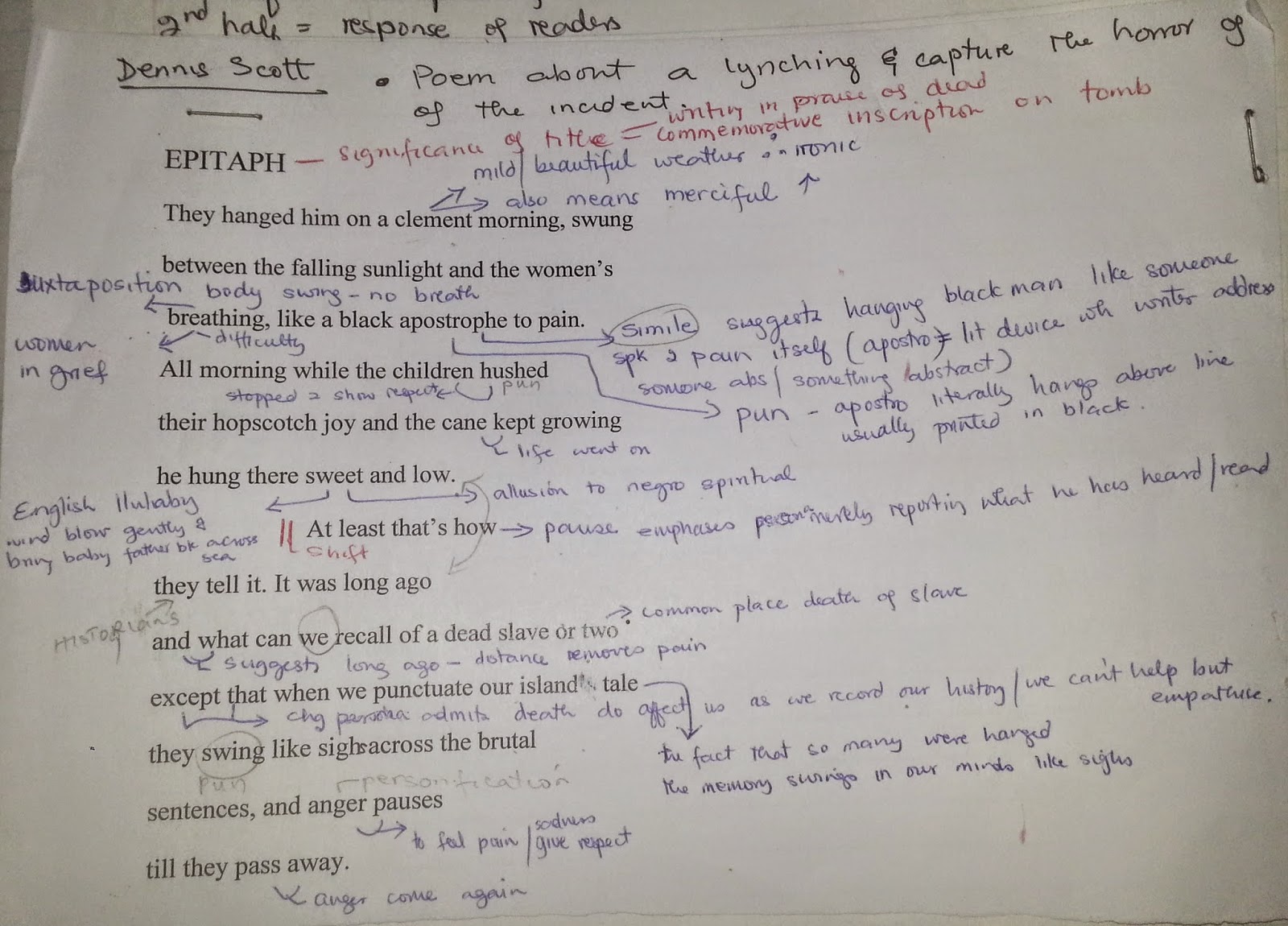Epitaph
by Dennis Scott (Jamaica 1939-1991)
The image is vivid, stark
and gruesome. Amidst the beauty of the “falling sunlight” the dead body of a
slave hung. The image evokes in the reader:
·
Anger against human brutality
·
Compassion for the fate of the slave
Through the sad tale, the
poet achieves his intention of giving the reader insights into the brutality
faced by slaves, in the time of their enslavement. The poem is a TRIBUTE to the dead slave, and is
melancholic in mood and tone.
The poet uses certain
words and expressions (to describe the morning’s atmosphere) that should be
taken note of. The poet compares the swinging body to “a black apostrophes to
pain” the black merely represents skin color.
The use of the word
apostrophe is a comparison on two levels:
1.
Apostrophe, the punctuation sign that is
hung above a line
2.
Apostrophe, the literary device that is an
address to an absent person
In the first half the
poet describes a horrible scene through literary language that ironically
suggests beauty, happiness and peace. The second half starts by callously
dismissing the hanged slave as irrelevant to this generation so long after
slavery. However the last four lines assures us that the deaths are still felt
(how we look, and our island’s heritage). The poet separates the angry response
to racist brutality from the mourning like sights appropriate to death.
The poem is written in
free verse allowing the shift to a new line to act as a pause and add some
significance or surprise to the first or last word in a particular line. The unusual
indentation in line 7 suggest a change in tone, a shift in focus, both are emphasized
by the divide (use of eye rhyme). Only two lines rhyme perfectly.
1st half describes
the scene (exploitation of slaves)


.jpg)


1 comment:
simile ,alliteration and symbolism of the poem?
Post a Comment